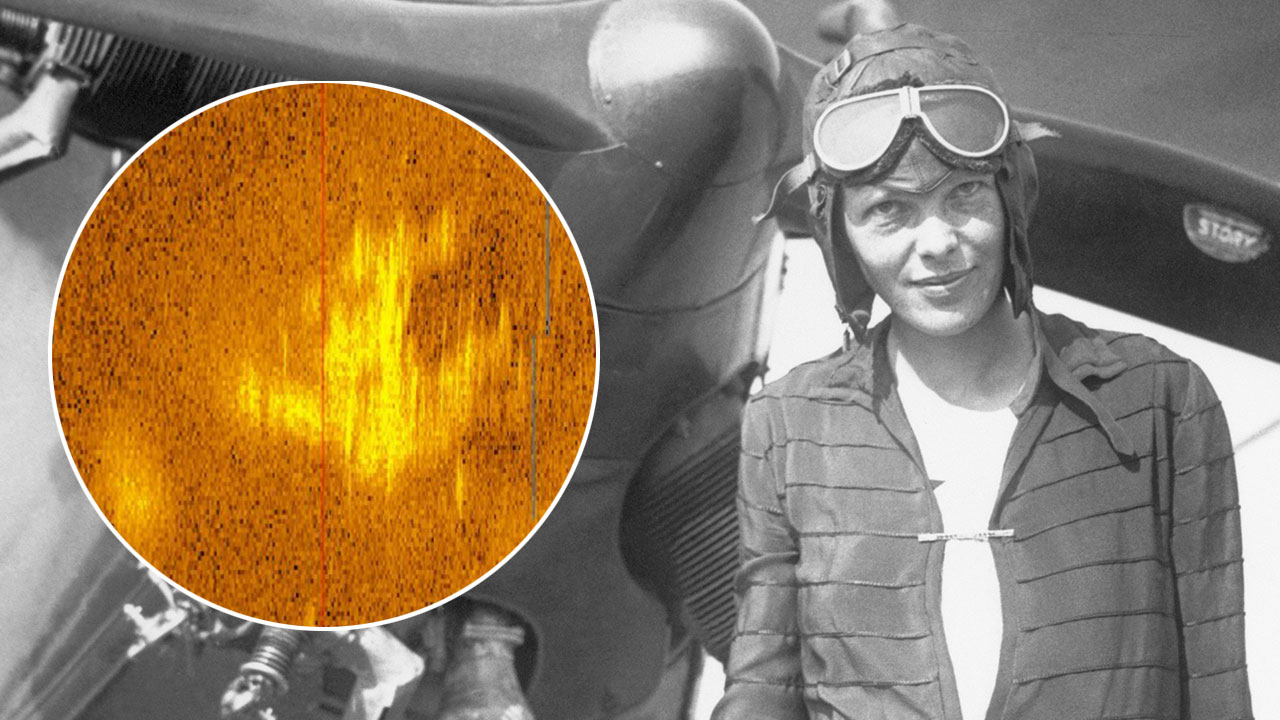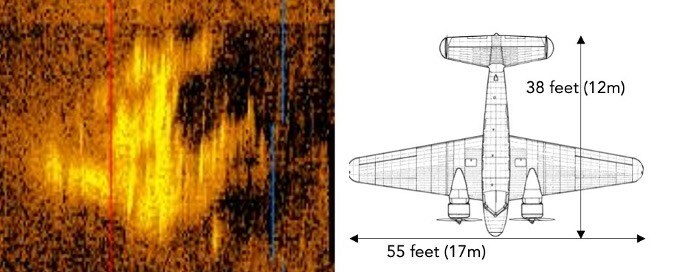Amelia Earhart's plane may have crashed in the heart of the Pacific Ocean, explorer claims
Sonar images could reveal the location of Earhart's fatal crash, but some experts say the object can't be her aircraft.

An ocean exploration team believes they've found iconic pilot Amelia Earhart's plane in the heart of the Pacific Ocean. But some experts say they're not so sure.
The group, known as Deep Sea Vision, recently released underwater sonar images that resemble a plane lodged more 16,000 feet (4,900 meters) underwater, equivalent to around 12 Empire State Buildings stacked on top of each other.
The team captured the image around 100 miles (160 kilometers) off Howland Island, an uninhabited coral atoll in the central Pacific Ocean where Earhart was supposed to refuel during her second and final attempt to fly around the world at the equator in 1937. During this expedition, Earhart flew a Lockheed Electra 10E, a twin-engined plane about the size of a school bus.
"One of the most unique key characteristic[s] of [Amelia Earhart's] aircraft were the distinctive twin vertical stabilizers on the tail," Tony Romeo, a former pilot and CEO of Deep Sea Vision, wrote in an email sent to Live Science. "The sonar image shows what appears [to be] two strong echos from where these two vertical stabilizers would be positioned."
RELATED: Could a nuclear reactor help solve the mystery of Amelia Earhart's disappearance?
Between September and December 2023, a 16-member crew from Deep Sea Vision surveyed more than 5,300 square feet (492 square meters) of the ocean floor using an underwater "Hugin" drone, a torpedo-shaped device that autonomously maneuvers through the water and scans the seabed.
Some experts say the images are credible enough to raise the possibility that this was Earhart's plane. However, others, including The International Group for Historic Aircraft Recovery (TIGHAR), cast doubt on the idea. TIGHAR representatives said they believe Earhart landed on an island in Kiribati and lived as a castaway before dying.
Get the world’s most fascinating discoveries delivered straight to your inbox.
"The Lockheed Model 10 was built around an immensely strong center section that featured a massive 'main beam' that ran through the cabin and all the way from engine to engine," TIGHAR representatives wrote in an email newsletter. "For the wings of an Electra to fold rearward as shown in the sonar image, the entire center section would have to fail at the wing/fuselage junctions — and that's just not possible."

Romeo offered an explanation for this discrepancy.
"It is important to note that sonar data will appear more and more stretched the further the target is from the sonar. For this reason the wings appear to be stretched or 'swept'," said Romeo, who has invested $11 million in the trip. "You'll notice that the tail section also appears to be 'swept' for this same reason," he said. "If the tail and wings are both 'straightened' out the shape of the target looks very much like [Amelia Earhart's] Lockheed Electra."
Sonar search
Sonar has long been used to map the seafloor for navigational purposes or to search for missing objects, like planes and shipwrecks. However, images from the extreme depths where Deep Sea Vision captured the scan can look unclear, said Eric Terrill, a marine scientist at the Scripps Institution of Oceanography, part of University of California, San Diego.
"Due to the substantial depth of many ocean areas, transmitting high-frequency sound suitable for imaging over long distances while obtaining a clear return signal poses significant challenges to the necessary size of the transmitter and the physics of the propagating sound," Terrill told Live Science in an email. However, the image is "compelling and deserves further attention," he added.
The Deep Sea Vision team didn't flag the sonar image until they were sifting through their data, about 90 days into their expedition, which was two months after the data was first captured. By that time, it was too late to turn back, and their drone did not have a functional camera when it did pass over the site, Romeo told The Wall Street Journal. As a result, they have not yet reinforced their finding with photographic evidence or uncovered details, such as serial numbers, that could confirm that the craft matches Earhart's Electra.
"There is the possibility that it is another aircraft or even a WWII plane," Romeo said. However, there are no known aircraft disappearances on record in this area, he added.
The Deep Sea Vision team plans to go back to the site later this year to investigate further, according to The Wall Street Journal.

Kiley Price is a former Live Science staff writer based in New York City. Her work has appeared in National Geographic, Slate, Mongabay and more. She holds a bachelor's degree from Wake Forest University, where she studied biology and journalism, and has a master's degree from New York University's Science, Health and Environmental Reporting Program.
